When people die, it’s usually because one key organ fails that the human body can’t survive without. Severe heart or kidney failure patients need prompt organ transplants to survive. That’s where 3D printed organs come in.
Over 120,000 people are currently on waiting lists for a donor organ in the USA. The average wait time for an organ transplant is 1,085 days for a heart in the UK, and 3.6 years for a kidney transplant in the USA. Organ donors can offer a kidney, but can’t donate a heart – which usually come from brain-dead patients.
You’re not guaranteed to survive the waiting time, so the ability to 3D bioprint organs would be invaluable.
What is 3D bioprinting?
3D bioprinting, uses bioinks – biocompatible materials and human cells – to create living tissues and organ structures in the same way plastic parts are 3D printed, layer by layer.
Bio-compatible are sometimes used as scaffolds, creating structures that human cells are then inserted into. They are then cultivated into fully functional human tissues.
These living 3D printed tissues are currently used to study human organ function, as well as to test new drugs without having to use animal testing. Many scientists believe we are close to creating fully-functioning, transplantable 3D printed organs with new 3D bioprinting technologies.
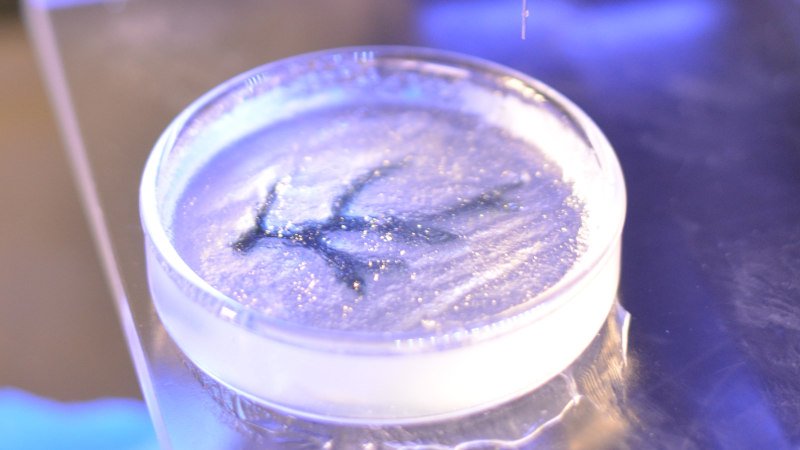
History of 3D Bioprinting and 3D Organ Printing
The first instance of a 3D printing organs was achieved in the Wake Forest Institute for Regenerative Medicine back in 1999. Researchers created an artificial scaffold for a human bladder — and follow-ups 10 years later found the patient had no complications. Three years later in 2002, Wake Forrest Institute researchers 3D printed a fully functional kidney.
The first commercially available 3D bioprinter was developed in 2009 by Organovo, able to 3D print live human cells for the first time, and without having to first build a scaffold. Soon after, this bioprinter created a biodegradable blood vessel without a scaffold.
More recently in 2019, Israeli researchers 3D bioprinted a miniature heart capable of contracting as real hearts do, with a blood vessel network to contract as our hearts do, and built anatomically like human hearts. This rabbit-sized heart will likely form the basis for future research into 3D printing human organs.
Additional research also includes Polish researchers’ work into printing a prototype of a bionic pancreas.
Here are some of the most exciting and hopeful projects for bioprinting organs.
3D Printed Skin
Your skin is your body’s largest organ. It protects your innards, holds you together, and regulates your body’s temperature. However, since skin doesn’t perform any complex chemical-sorting or blood-pumping activities, the skin is one of the simplest organs to replicate. In theory, this should make it the easiest organ to 3D bioprint.
3D Printed Skin Replacing Skin Grafts
Skin grafts are currently the most effective treatment method for burn victims, but are far from perfect. They can get infected, scar badly, bleed copiously, and recovery times are long. They also need to be taken from other parts of your body, commonly the thigh or buttocks — which many would be keen to avoid.
Here’s where 3D printed skin comes in. Back in 2017, researchers at the Universidad Carlos III de Madrid collaborated with BioDan to create a prototype for a 3D bioprinter that can print completely functional human skin. Since 3D printed skin can be created quickly and be applied straight onto the wound, wounds can recover significantly better than with skin grafts which take longer.
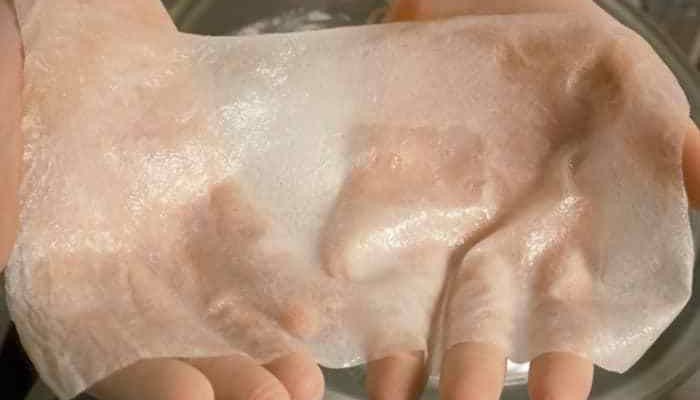
More recently, researchers at the Rensselaer Polytechnic Institute in New York have developed a new form of 3D bioprinted skin, featuring working blood vessels. This is important because current grafts eventually “just falls off; it never really integrates,” according to research leader Pankaj Karande, as current skin grafts lack functional vascular systems.
“Right now, whatever is available as a clinical product is more like a fancy Band-Aid,” said Pankaj Karande, an associate professor of chemical and biological engineering and member of the Center for Biotechnology and Interdisciplinary Studies (CBIS), who led this research at Rensselaer. “It provides some accelerated wound healing, but eventually it just falls off; it never really integrates with the host cells.”
Pankaj Karande
Rather, current skin grafts act like “a fancy Band-Aid,” says Karande. This new research could provides the base for future effective 3D printed skin treatments to minimize the long-term and permanent damage done in burn victims.
Testing on mice showed that successfully transplanted 3D printed skin began to communicate and connect with the mouse’s existing vessels. This is hugely encouraging, suggesting the same would occur in humans.
However, the team themselves acknowledge the current limitations. The vascular systems of burn victims’ skin are often destroyed, leaving no existing system for this 3D bioprinted skin to attach to and work with. There are still serious improvements to be made before use in future patients.
The team instead are trying to tackle skin grafts for diabetic and pressure ulcers, but hope the technology can eventually be adapted for serious burn injuries and bioprinted skin grafts.
Bioprinted Skin for Medical Testing
Companies such as L’Oréal are investing significant sums into R&D to discover ways to create 3D printed skin. 3D bioprinted skin is useful not just for humans directly, but also having real, living skin offers skincare and other medical companies new ways to test products without requiring living humans or animals.
New products, such as sun creams and other ointments could be developed more quickly and effectively, helping reduce the prevalence of skin cancer. Additionally, more authentic fake skin makes for better tattoo artist apprenticing before scratching their designs onto real people — perhaps improving tattoos of the future.
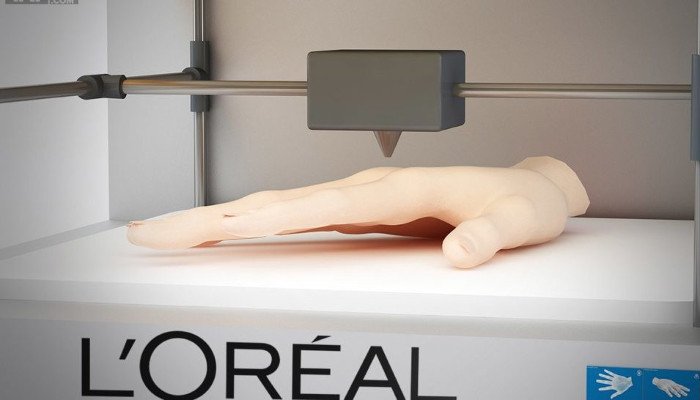
Bioprinted & Silicone 3D Printed Hearts
Around 3,000 people in the USA are waiting for a heart transplant on any given day. Since about 2,000 hearts become available each year, waiting times can be years.
Contrary to what you might think, the heart is one of the most biologically simple organs in the body. It only has one function — to pump blood around the body. This should make it one of the easiest 3D printed organs to bioprint and transplant.
Current thinking suggests the best way of creating a 3D printed heart is through bioprinting ‘scaffolds’. Rather than 3D printing heart cells layer-by-layer, these biodegradable scaffolds provide structural support for cells, directing them to where they should be. Then, when the cardiac cells develop into a mature, finished 3D printed heart structure, the scaffold can be broken down and removed.
This has already been shown to work on a micro scale with a patch of working heart tissue. The 3D printed heart tissue was successfully used to repair a damaged mouse heart.
There are still barriers and difficulties, however. Hearts use extremely small, one-cell-thick structures — capillaries — extremely difficult to accurately bioprint. They are simply too small.
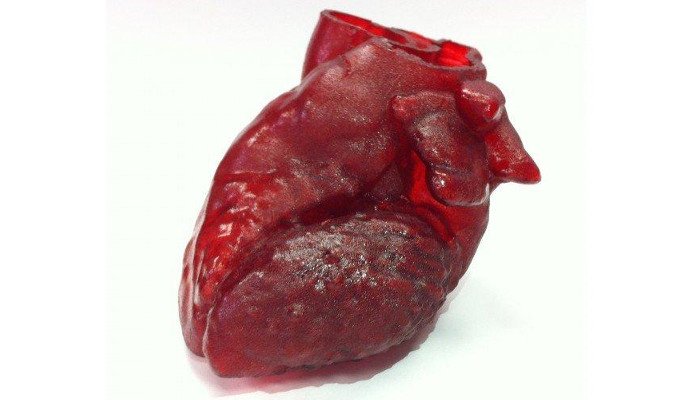
3D Printed Capillary Breakthrough
Prellis Biologics, recipient of a recent $3M investment to 3D print capillaries, claim to be able to 3D bioprint one-cell-thick capillaries that oxygen and nutrients can move through.
3D organ printing is impossible without capillaries. However, in 2018, Dr Melanie Matheu, Founder and CEO at Prellis, announced developments to print at the speed and resolutions required to form viable capillaries. Speed, and not only accuracy, is key, as cells cannot survive without blood supply for long — less than 30 minutes.
Capillaries are roughly 5-10 microns in diameter, but Prellis claim to be capable of 3D bioprinting structures up to 0.5 microns, and print these structures 1000x faster than existing methods. (Previously, 1 cm3 of printed tissue could take weeks using microvasculature.) Prellis’ new goal is to 3D bioprint an entire kidney vascular system within 12 hours.
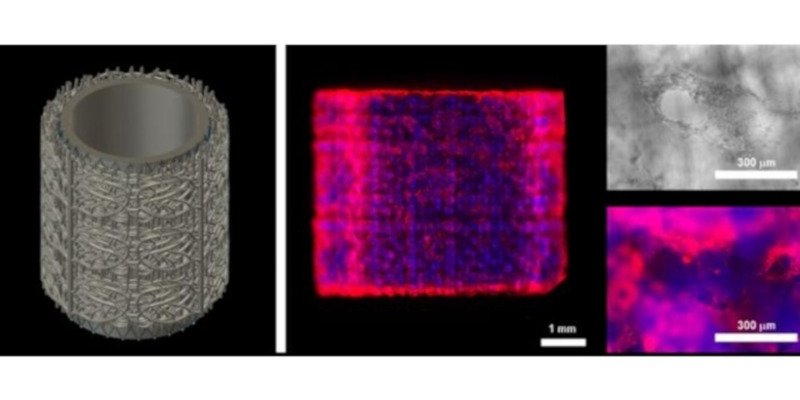
These successes do not mean bioprinted organs are imminent, as the technology needs serious refining and improvements. Prellis Biologics are developing connective tissue for drug testing before striving for fully transplantable organs and natural tissues, so life-saving transplants are still a while off.
Other research instead aims to artificially mimic the heart’s role, rather than create real 3D bioprinted hearts.
3D Printed Silicone Artificial Hearts
In July 2017, ETH Zurich, led by Nicholas Cohrs, a doctoral student, created the first 3D printed heart made up entirely of soft silicone synthetic polymers. Its pumping mechanism works very much like a real human heart, and was printed in one large structure. This means no parts need to be pieced together except the input and output pumps.
This artificial 3D printed heart managed to last around 30 minutes before the materials couldn’t handle the strain and broke down. This represents good progress, but shows how far away we still remain from any viable alternative to real human heart transplants.
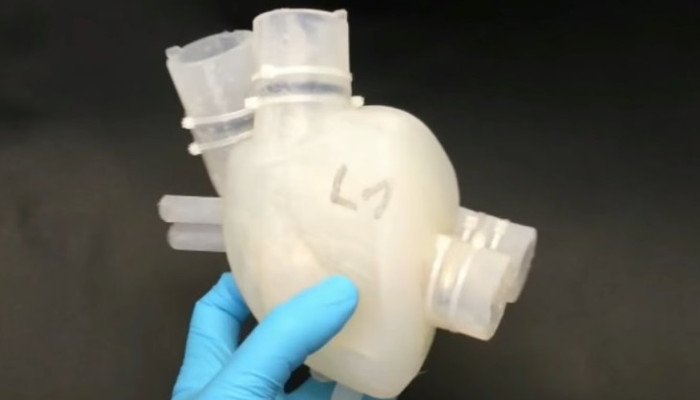
3D Printed Lungs
In May 2019, researchers at Rice University, USA, 3D printed an artificial air sac that contracts and expands just like real human lungs. These air sacs breathe without bursting, and could be key in overcoming current 3D bioprinting issues with creating working complex vascular networks.
“One of the biggest roadblocks to generating functional tissue replacements has been our inability to print the complex vasculature that can supply nutrients to the densely populated tissues… Our organs actually contain independent vascular networks, like the airways and blood vessels of the lung or the bile ducts and blood vessels in the liver. These interpenetrating networks are physically and biochemically entangled, and the architecture itself is intimately related to tissue function.”
Jordan Miller, research leader
The lung-mimicking air sacs used SLATE bioprinting technologies (Stereolithography Apparatus for Tissue Engineering), using a bioprinter to solidify a liquid pre-hydrogel using blue light, with the result featuring airways and blood vessels.
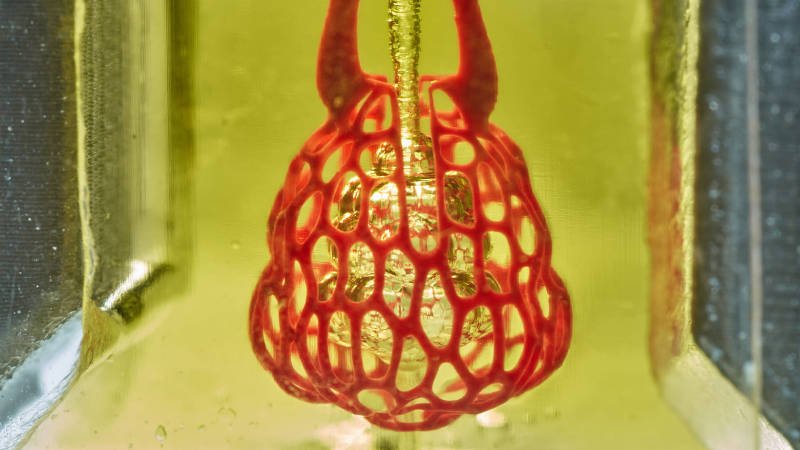
CollPlant & United Therapeutics Collagen Lungs
Other projects include CollPlant Biotechnologies and United Therapeutics’ collaboration to create transplantable 3D printed lungs. The collaboration aims to combine CollPlant’s rhCollagen (recombinant human collagen) technologies with United Therapeutics’ organ manufacturing systems.
CollPlant’s tech uses tobacco plants, previously associated instead with lung damage rather than lung rescuing and improvement, to create collagen. Collagen is used to create their collagen-based bioinks, which are used to 3D print lungs.
United Therapeutics plan to use collagen lungs as a skeleton to insert real human cells into. Unfortunately, these lungs will never work for human transplanting, but they can act as a structure to build future 3D bioprinted lungs and organs from.
“We are trying to build the little stick houses for cells to live in.”
Derek Morris, a project leader at United Therapeutics.
The partnership also aims — in partnership with 3D printing giant 3D Systems, using their UV laser printers – using a pool of collagen to 3D print a lung outline. They aim for this outline to feature every airway branch, including alveoli and capillaries, within a few years’ time. They already 3D bioprinted a windpipe with two bronchi back in 2018.
United Therapeutics predicted back in 2018 that they were 12 years away from manufactured organs. We hope to see them hit their goal in 2030.
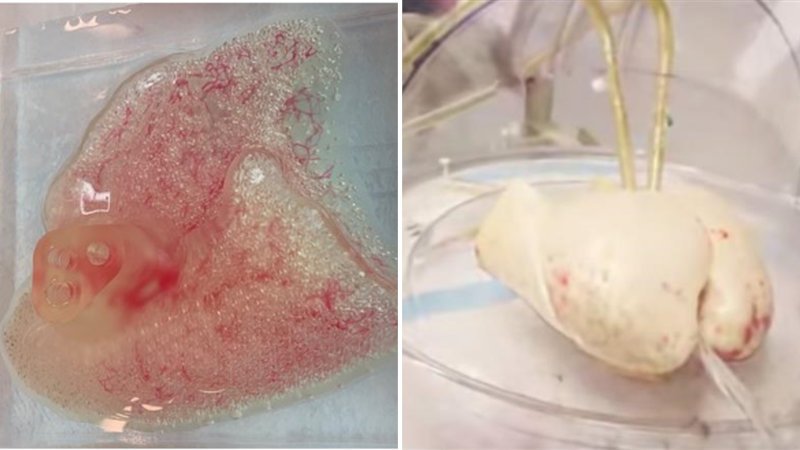
3D Printed Intestines
Our intestines are key for absorbing water, nutrients and medicines, as well as preventing deadly illnesses affecting our bodies.
Researchers in New York’s Cornell University are trying to create synthetic bioprinted intestines for animal-free and medicinal testing. Using a PolyJet 3D printing process, the team created a microscopic bioreactor that induces peristaltic flow in the lumen cells that line the intestine and are responsible for contracting the intestine’s muscles.
Results showed that cells grown in the bioreactor and were demonstratively more defined, uniform and effective, absorbing more glucose than those without induced peristaltic fluid.
These advances could prove key for intestinal failure patients, and could help limit organ rejection problems.
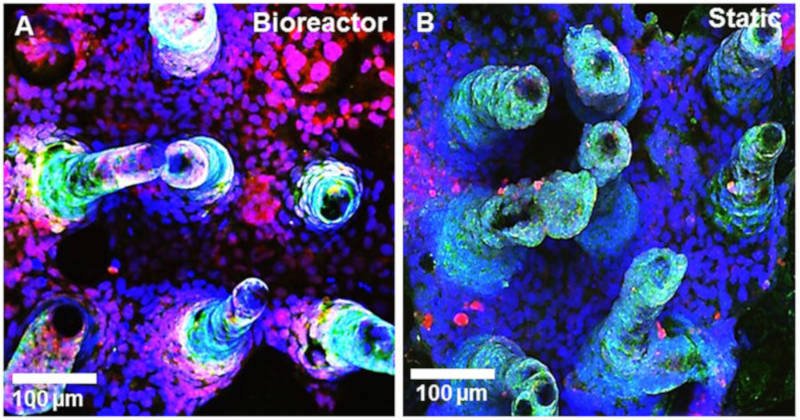
3D Printed Liver
Organovo 3D Printed Liver Tissues
Organovo have a rich history in 3D printing liver tissue. The company was founded back in 2007, licensing 3D bioprinting technology from the University of Missouri, and developed by Gabor Forgacs.
Organovo’s ExVive kidney and lung tissues are a breakthrough, as they can be 3D bioprinted to create both tissues and separate capillary blood cell networks that mimic the body’s real systems. Merck & Astella have released data confirming Organovo’s tissue models fare better than traditional drug-testing methods.
Organovo are now working on clinical trials for the direct transplantation of 3D printed liver tissue patches. These patches are roughly the size and thickness of a dollar bill, and therefore can’t help patients fully recover, but for patient’s on the liver transplant list, it could keep them going for an additional 1-2 years, saving their lives.
The aim is to start transplanting these liver tissues into patients in 2020. Organovo claim the therapeutic liver transplant market is worth more than $3bn in the USA alone.
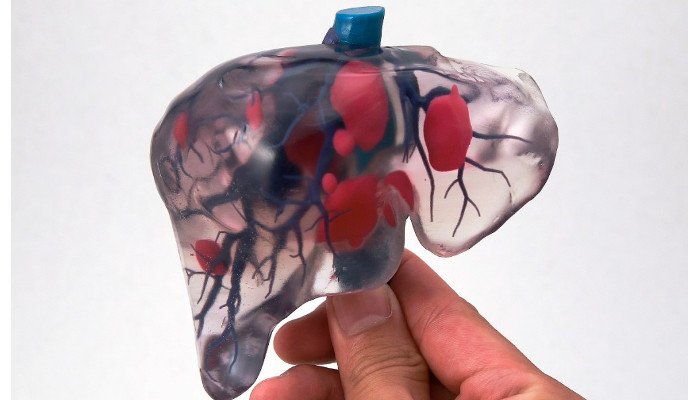
California Liver Bioprinting Breakthroughs
Back in 2016, Dr Shaochen Chen at the University of California, San Diego, announced 3D printed liver tissue developments that mimic real human liver structure and function. Patient’s cells were taken from their skin and combined with two other cell types before being changed into liver cells.
Stem cells are special in that they can change into multiple cell types and divide to produce more of these. This makes them extremely valuable for research and treatments.
The 3D printed liver bioinks were then deposited into 3 x 3 mm squares. The squares were cultured in vitro for 3 weeks as they turned into tissues. Following testing, the 3D printed liver tissue was found to successfully maintain the key liver functions for a longer time than existing liver models can.
Sao Paulo, Brazil, Miniature 3D Printed Livers
More recently in late 2019, researchers in Sao Paulo, Brazil, bioprinted miniature livers from human blood vessels. Despite their diminutive stature, these 3D printed livers can perform all the liver’s complex processes, from producing vital proteins, storing key vitamins, and secreting bile to absorb fats.
Cellink’s Inkredible 3D bioprinter produced the livers in a 90-day printing process. This spanned taking a patient’s blood to obtain stem cells, reprogramming them into liver cells, integrating them into the 3D bio-ink, and then bioprinting them to create the liver. The bioprinted cell structures were then cultivated for 18 days.
Though not large enough, these developments move 3D bioprinting towards the end of the infancy stage, building towards a major breakthrough.
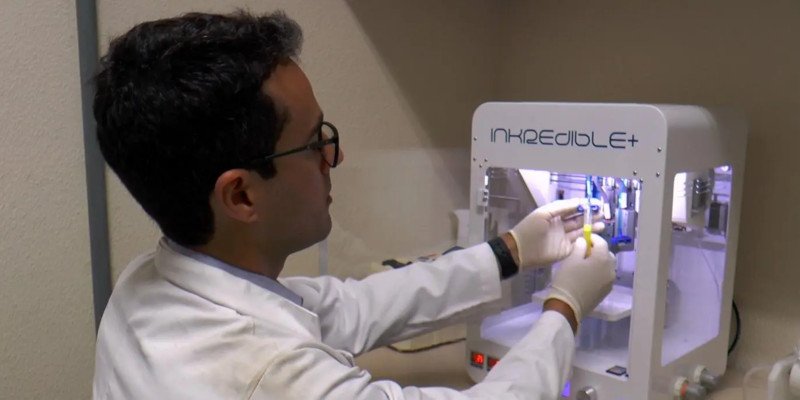
3D Printed Brains
As the body’s most complex and uncharted organ, the least 3D printed organ progress has been made in the brain.
Only very recently have scientists even 3D bioprinted the first tissues as soft as brain tissue. It is extremely difficult to 3D print such soft biological materials as when building layer upon layer, the previous layers simply collapse under the pressure.
However, advances have been made. Zhengchu Tan, a researcher at Imperial College London, tested bioprinting an extremely soft hydrogel by cryogenically freezing previously printed layers. Once frozen, these layers were more stable, enabling more layers to be printed on top. The freezing is then repeated until the hydrogel tissue is complete.

Once finished, the tissue is then slowly thawed so that it retains its shape and form, operating together as one tissue.
Having succeeded in creating these first soft hydrogel tissues, more complex objects are in the works which will be much harder to maintain their structure and cool equally across the part.
3D Printed Organs: Conclusion
Overall, we’re becoming more accomplished at biologically inspired engineering. With simpler organs like skin, significant advances have already been made. However, with 3D printed organs such as hearts, livers, and kidneys, the microscopic size of capillaries means we are likely decades away from organ transplantation.
We may be close to a situation where 3D printing a new organ is common, significantly expanding our lifespans. Scientific breakthroughs occur all the time, and as 3D printing improves and becomes more precise, perhaps we can use new health resources to free patients from the organ shortag














